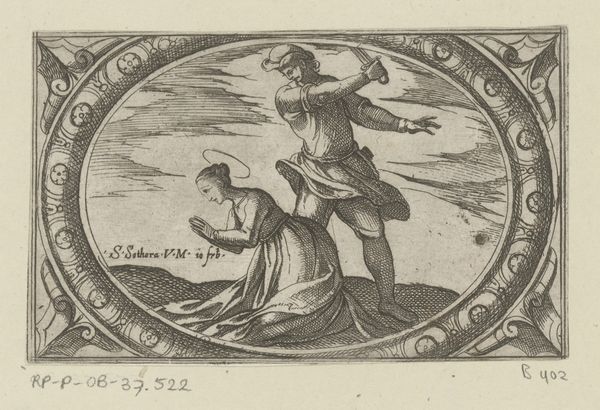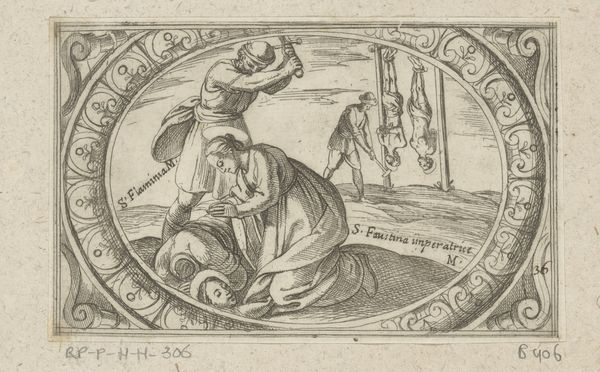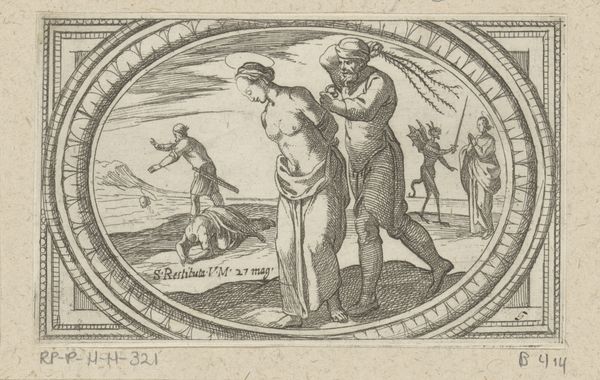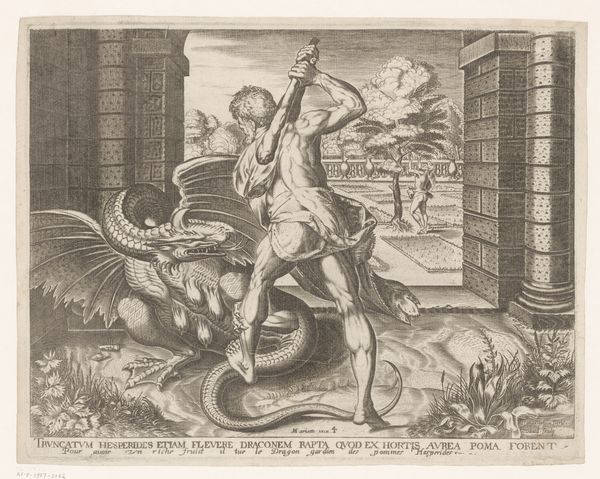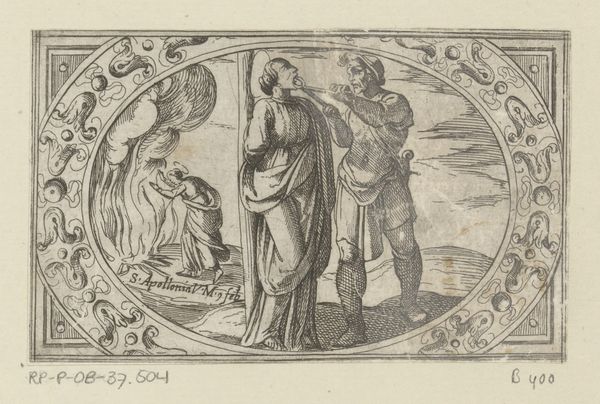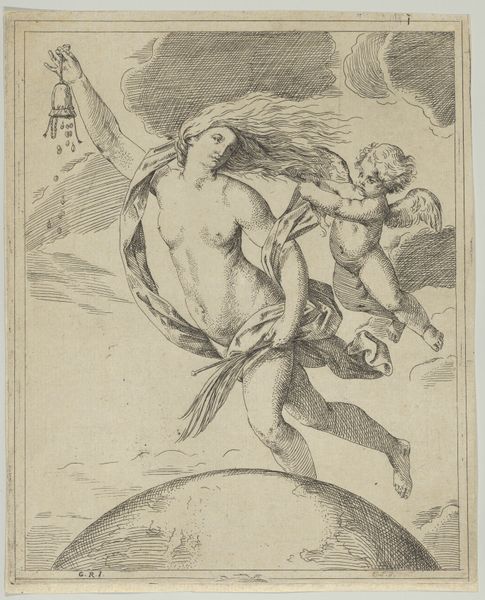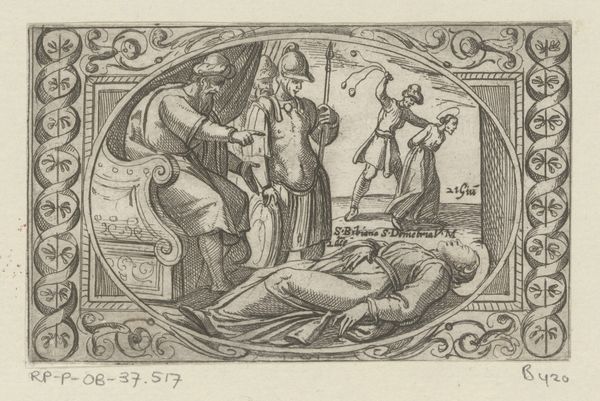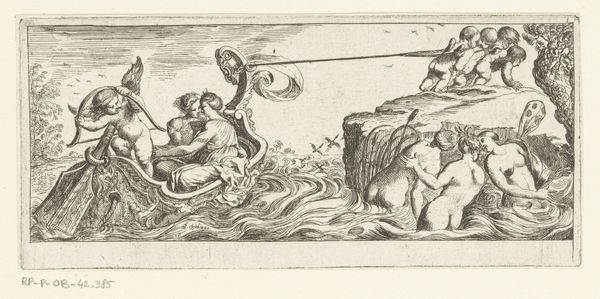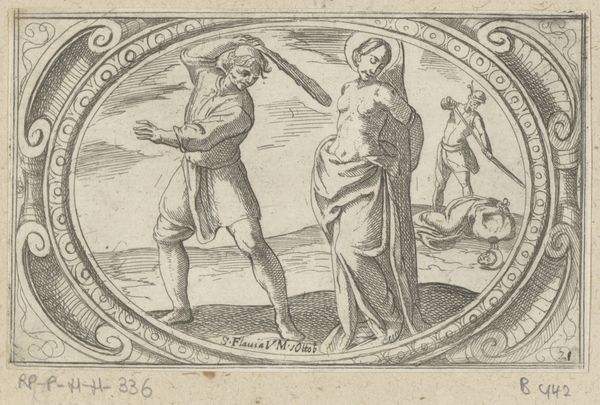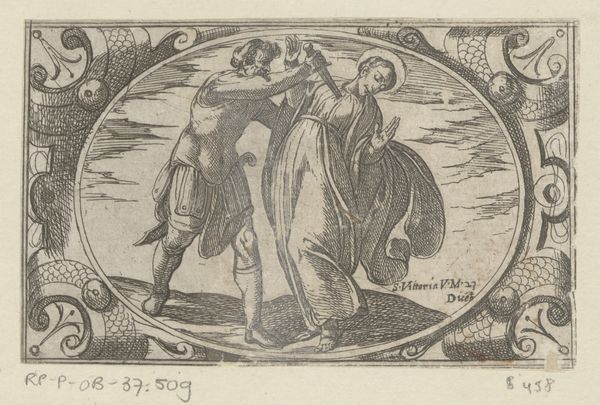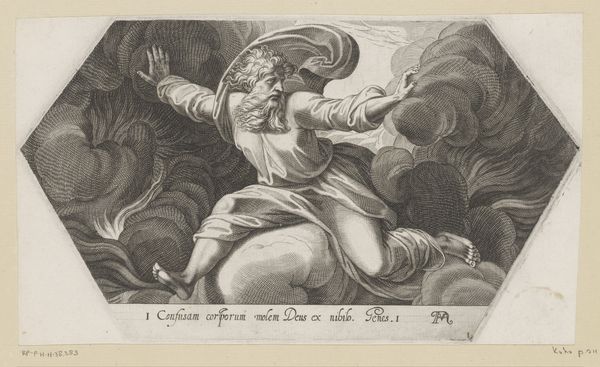
print, engraving
#
narrative-art
# print
#
old engraving style
#
sketch book
#
mannerism
#
figuration
#
line
#
history-painting
#
engraving
Dimensions: height 73 mm, width 114 mm
Copyright: Rijks Museum: Open Domain
Editor: Here we have Antonio Tempesta's engraving, "H. Reparata," created sometime between 1565 and 1630. The starkness of the lines gives the scene a brutal, almost unsettling feel. What catches your eye in this piece? Curator: Immediately, the power of symbols strikes me. Look at the dove. A dove is a widespread motif. Editor: You mean the dove representing peace? I hadn't thought about that, considering the… violent beheading depicted. Curator: Precisely. The artist creates an intentional tension by juxtaposing images. It suggests the soul's flight to paradise after martyrdom, carrying connotations from antiquity and persisting even now. Notice, too, the flames behind the executioner; perhaps calling on classical representations of Hell. Is there something else you notice? Editor: There’s another figure standing in the flames! So, would that be a depiction of Saint Reparata? Is she both dying, and already in Heaven? Curator: Indeed. Note the use of line. Do you think it successfully communicates meaning? The engraving uses *horror vacui*, as if the scene needed to be completely filled. What emotions would be evoked? Editor: I guess that would add to the feeling of tension. It makes the whole scene feel restless. Curator: And within that restlessness, there’s the underlying concept of eternal reward, of transcendence despite violence. Images like these helped to establish collective cultural memories through symbolic representation. Editor: So, it’s not just about the scene, but about the long afterlife of its meaning. I'll definitely remember to look for those connecting threads. Curator: Precisely, because art’s cultural power resonates far beyond its creation.
Comments
No comments
Be the first to comment and join the conversation on the ultimate creative platform.

